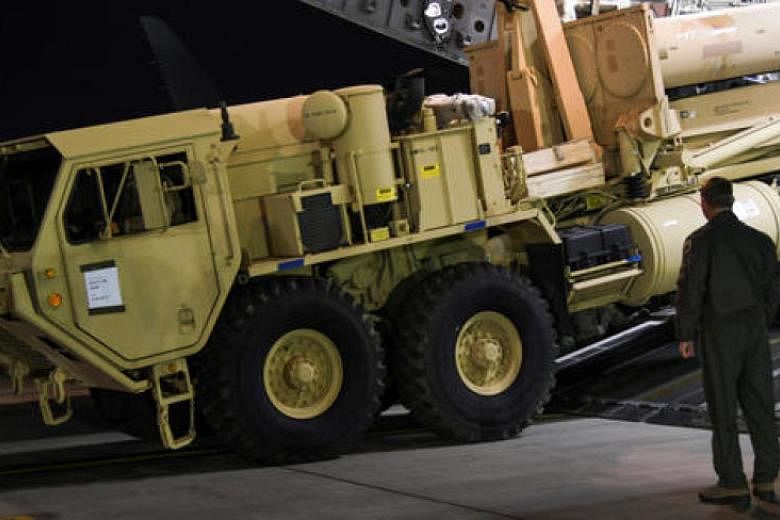SEOUL (REUTERS) - South Korea's spy agency does not believe that North Korea has secured the crucial re-entry technology that can allow a warhead to re-enter the earth's atmosphere after flying through space, a South Korean lawmaker said yesterday, disputing Pyongyang's account.
The announcement came ahead of a statement by the US Missile Defence Agency, which said yesterday it shot down a simulated, incoming intermediate-range ballistic missile (IRBM) similar to the ones being developed by countries like North Korea.
Mr Yi Wan Young, who is also a member of the South Korean Parliament's intelligence committee, told reporters during a televised briefing that the National Intelligence Agency had not detected any unusual activity at the North's nuclear test site.
A re-entry vehicle protects a ballistic missile's warhead through the course of its flight, including the re-entry stage. Without proper protection, a missile's warhead will burn up from the heat and pressure.
North Korea on July 4 test-fired a launch of an intercontinental ballistic missile (ICBM) that some experts believe could have the range to reach Alaska and parts of the West Coast of the United States.
A day after the launch, North Korea said the missile, Hwasong-14, is capable of carrying a "large, heavy nuclear warhead" that can survive re-entry into the earth's atmosphere.
In May, Pyongyang released images of the earth taken from a camera mounted on a missile to show that it had mastered the technology for atmospheric re-entry. The US and its allies have said more analysis is needed to verify this.
The latest US missile defence test over the Pacific Ocean has gained significance after North Korea's latest launch.
Planned months ago, the test was the first of the Terminal High Altitude Area Defence (Thaad) system against an incoming IRBM, which experts say is a faster and more difficult target to hit than shorter-range missiles.
The US Missile Defence Agency said the IRBM was designed to behave similarly to the kinds of missiles that could threaten the United States.
The US has deployed Thaad to Guam and South Korea to help guard against threats from North Korea.

